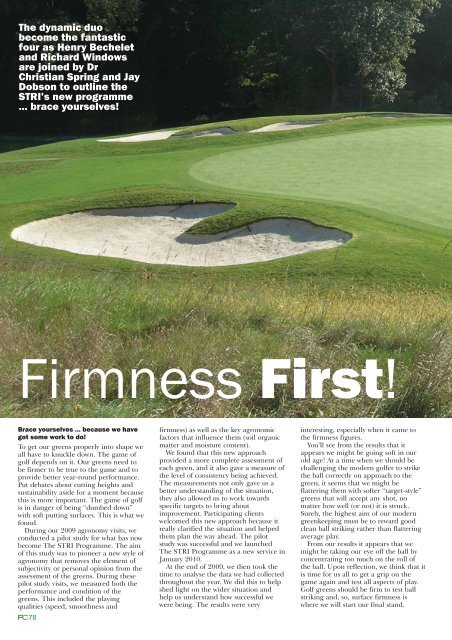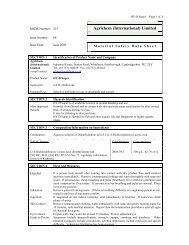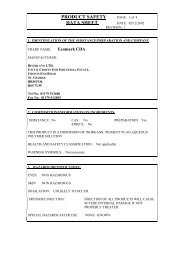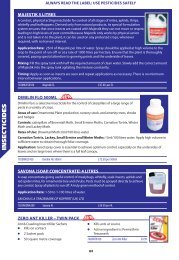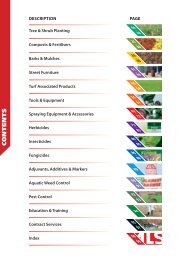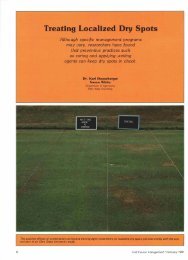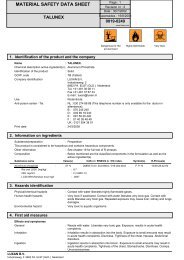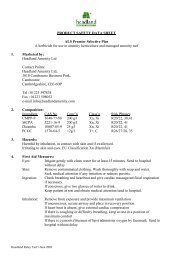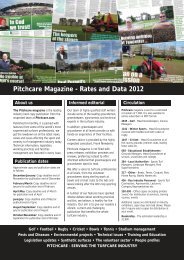Earning his Spurs - Pitchcare
Earning his Spurs - Pitchcare
Earning his Spurs - Pitchcare
You also want an ePaper? Increase the reach of your titles
YUMPU automatically turns print PDFs into web optimized ePapers that Google loves.
The dynamic duo<br />
become the fantastic<br />
four as Henry Bechelet<br />
and Richard Windows<br />
are joined by Dr<br />
Christian Spring and Jay<br />
Dobson to outline the<br />
STRI’s new programme<br />
... brace yourselves!<br />
Firmness First!<br />
Brace yourselves ... because we have<br />
got some work to do!<br />
To get our greens properly into shape we<br />
all have to knuckle down. The game of<br />
golf depends on it. Our greens need to<br />
be firmer to be true to the game and to<br />
provide better year-round performance.<br />
Put debates about cutting heights and<br />
sustainability aside for a moment because<br />
t<strong>his</strong> is more important. The game of golf<br />
is in danger of being “dumbed down”<br />
with soft putting surfaces. T<strong>his</strong> is what we<br />
found.<br />
During our 2009 agronomy visits, we<br />
conducted a pilot study for what has now<br />
become The STRI Programme. The aim<br />
of t<strong>his</strong> study was to pioneer a new style of<br />
agronomy that removes the element of<br />
subjectivity or personal opinion from the<br />
assessment of the greens. During these<br />
pilot study visits, we measured both the<br />
performance and condition of the<br />
greens. T<strong>his</strong> included the playing<br />
qualities (speed, smoothness and<br />
78<br />
firmness) as well as the key agronomic<br />
factors that influence them (soil organic<br />
matter and moisture content).<br />
We found that t<strong>his</strong> new approach<br />
provided a more complete assessment of<br />
each green, and it also gave a measure of<br />
the level of consistency being achieved.<br />
The measurements not only gave us a<br />
better understanding of the situation,<br />
they also allowed us to work towards<br />
specific targets to bring about<br />
improvement. Participating clients<br />
welcomed t<strong>his</strong> new approach because it<br />
really clarified the situation and helped<br />
them plan the way ahead. The pilot<br />
study was successful and we launched<br />
The STRI Programme as a new service in<br />
January 2010.<br />
At the end of 2009, we then took the<br />
time to analyse the data we had collected<br />
throughout the year. We did t<strong>his</strong> to help<br />
shed light on the wider situation and<br />
help us understand how successful we<br />
were being. The results were very<br />
interesting, especially when it came to<br />
the firmness figures.<br />
You’ll see from the results that it<br />
appears we might be going soft in our<br />
old age! At a time when we should be<br />
challenging the modern golfer to strike<br />
the ball correctly on approach to the<br />
green, it seems that we might be<br />
flattering them with softer “target-style”<br />
greens that will accept any shot, no<br />
matter how well (or not) it is struck.<br />
Surely, the highest aim of our modern<br />
greenkeeping must be to reward good<br />
clean ball striking rather than flattering<br />
average play.<br />
From our results it appears that we<br />
might be taking our eye off the ball by<br />
concentrating too much on the roll of<br />
the ball. Upon reflection, we think that it<br />
is time for us all to get a grip on the<br />
game again and test all aspects of play.<br />
Golf greens should be firm to test ball<br />
striking and, so, surface firmness is<br />
where we will start our final stand.


